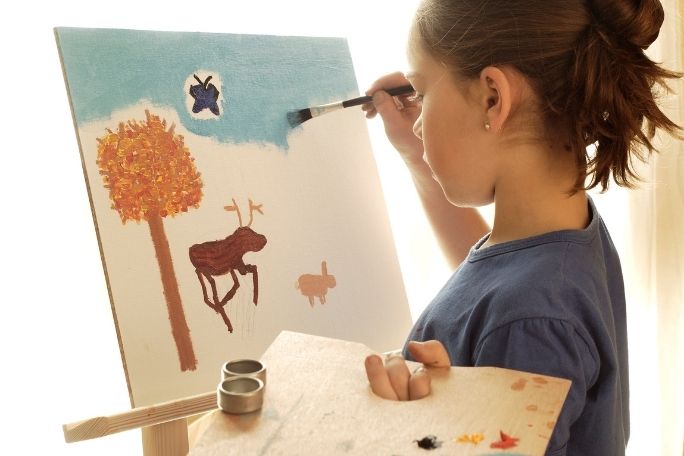Lesson summary
Students observe and draw animals in the school yard. They begin by participating in a game that helps them to identify the key features of a range of animals. They then head outside to find and observe animals in the yard, recording the key physical features and behaviours of the animals they see. Student then go back inside to create a cartoon drawing based on the animal they observed.
Learning intentions:
Students will...
- understand that animals are an important part of our environment, and are important to people
- understand how to apply art principles and techniques to their cartoon
Success criteria:
Students can...
- observe and record the behaviours and features of animals
- plan and create a cartoon
- apply art principles and techniques to their cartoon
Lesson guides and printables
Curriculum links
Select your curriculum from the options below.
Lesson details
Curriculum mapping
Australian curriculum content descriptions:
Year 3 & 4 Visual Arts:
- Use materials, techniques and processes to explore visual conventions when making artworks (ACAVAM111)
- Present artworks and describe how they have used visual conventions to represent their ideas (ACAVAM112)
Year 3 Science:
- Living things can be grouped on the basis of observable features and can be distinguished from non-living things (ACSSU044)
Year 4 Science:
- Living things depend on each other and the environment to survive (ACSSU073)
Syllabus outcomes: VAS2.1, VAS2.2, ST2-10LW, ST2-11LW.
General capabilities: Critical and creative thinking.
Cross-curriculum priority: Sustainability OI.2.
Relevant parts of Year 3 & 4 Visual Arts achievement standards: Students discuss how they and others organise the elements and processes in artworks. They plan and make artworks that communicate ideas.
Relevant parts of Year 3 Science achievement standards: Students group living things based on observable features and distinguish them from non-living things.
Relevant parts of Year 4 Science achievement standards: Students describe relationships that assist the survival of living things.
Unit of work: Creative Sustainability – Year 3 & 4.
Time required: 60 mins.
Level of teacher scaffolding: Medium – facilitate discussions, lead students in game and outdoor observation, oversee cartoon creation.
Resources required
- Student Worksheets – one copy per student
- Device capable of presenting a video to the class
- Sticky tape or masking tape
- Drawing paper
- Graphite pencils
- Coloured pencils or marker pens
- Animal Names
- Colouring Techniques Handout
- Optional – Cartoon Planning Questions
- Optional – Cartoon Ant Outline
Skills
This lesson is designed to build students’ competencies in the following skills:
- Creativity
- Critical thinking
Additional info
Faber-Castell has long understood the importance of creativity to all people, especially to young people. It is also continuously searching for environmentally friendly processes and high-quality materials to enhance children’s creative experience throughout every development phase. For more information about Faber-Castell, click here.


Welcome back!
Don't have an account yet?
Log in with:
Create your free Cool.org account.
Many of our resources are free, with an option to upgrade to Cool+ for premium content.
Already have an account?
Sign up with:
By signing up you accept Cool.org's Terms and Conditions(Opens in new tab) and Privacy Policy(Opens in new tab).